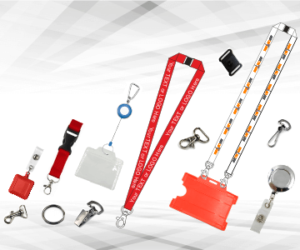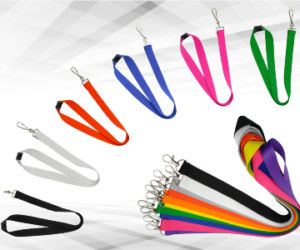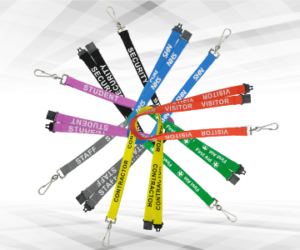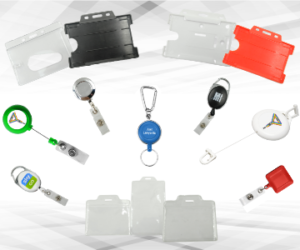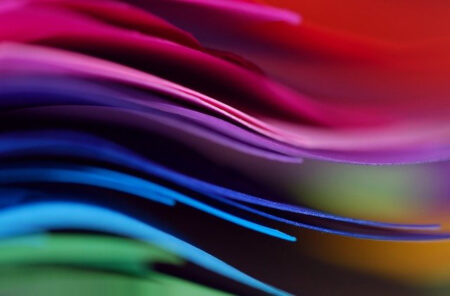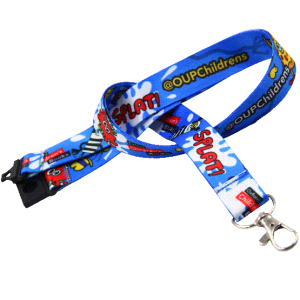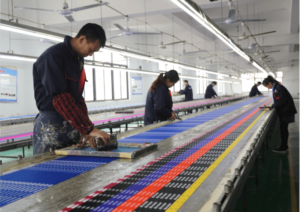When ordering custom printed lanyards, understanding the printing method makes all the difference to your final result. At JustLanyards, we use two main printing techniques: dye sublimation and screen printing. Each one offers their own advantages, and choosing the right printing technique depends on your needs. In this guide, we’ll explain broth printing processes along with the benefits and drawbacks of each.
What Are Custom Printed Lanyards?
Our lanyards feature your company branding including custom designs, logos and text. Unlike woven lanyards where the design is woven into the fabric itself, printed lanyards can offer greater design flexibility and faster production times.
We provide custom printed lanyards for a range of sectors and purposes including:
- Security
- NHS
- Education
- Trade fairs
- Charity events
- Brand promotion
Our friendly team can help you design your lanyard based on your needs and purposes.
What is Dye Sublimation Printing?
Dye sublimation is sometimes called heat transfer full colour printing. This process works by printing your design onto special transfer paper using CMYK inks, then running the paper and lanyard material through a heat press machine.
Heat transfer printing works a lot like your paper printer in your office, except it uses a specialised heat-activated ink. The process starts using a plain white lanyard, which is run through a heat printing press along with the design transfer paper. The heat from the printing press causes the ink to transform into a gas, impregnating the colour directly into the lanyard fibres rather than sitting on the surface. This creates a permanent print that won’t crack, peel, or fade over time. The entire design is printed in full colour in just a single pass through the printing press, making heat transfer printing an excellent choice for quick turnaround. This is the process we use for our express lanyard printing service.
When to Choose Dye Sublimation
Dye sublimation is an excellent choice for designs with multiple colours, gradients, photographic elements, or intricate detail. If your logo features colour transitions, shadows, or complex imagery, this printing method is the best for reproducing details accurately.
Unlike screen printing, heat transfer or dye sublimation printing doesn’t require the creation of individual screens for each colour. This makes dye sublimation ideal for projects with tighter deadlines without compromising on quality and looks.
Because dye sublimation prints in CMYK, it’s perfect for designs already created in this colour space. The full-colour capability means you’re not limited by colour count, so you can use as many colours as your design requires, making it a great choice for colourful designs.
What is Screen Printing?
Screen printing, also known as silk screen printing, is a more traditional approach to custom printing. This method involves creating a separate screen for each colour/pattern in your design and printing each colour individually on one side of the fabric. It works a bit like a stencil; the pattern is copied onto the screen, then the design is replicated onto your chosen colour of fabric by pushing the ink through the stencil. Between each colour, the fabric must be left to dry completely before the next colour can be added.
The design sits on top of the fabric rather than impregnating the fibres like dye sublimation. The final result is a bold, clear design with opaque colours and sharp lines.
When to Choose Screen Printing
Screen printing is popular due to its highly versatile nature. It can be used for almost anything that is flat and smooth, making it one of the most used methods in the industry. Screen printing is especially useful for simple, bold designs that feature 1-4 distinct colours, but it doesn’t work well for gradients. We use Pantone (PMS) colour matching to ensure exact consistency with your brand, making screen printing the perfect choice when you need a perfect colour match.
The sequential process of screen printing requires drying each colour before adding the next, means production takes longer than dye sublimation, but the trade-off is a bolder, clearer design that perfectly replicates your brand colours in Pantone.
Which is Better: Dye Sublimation vs. Screen Printing?
Both dye sublimation and screen printing have their own pros and cons. The choice ultimately depends on your specific requirements; do you have a bold logo you need copied exactly? Is time of the essence? The decision can depend on a range of factors.
Choose dye sublimation for:
- Gradients, complex imagery or photographs
- CMYK designs
- Faster production
Choose screen printing for:
- Simple vector designs
- Bold opaque colours
- Exact Pantone matching
Both methods create high-quality, durable lanyards that are suitable for daily wear. The decision comes down to design complexity, colour requirements, and timeline considerations.
We also offer our eco-friendly rPET material (made from recycled bottles) for both printing methods.
How to Choose
If you’ve got a complex logo or you need your lanyards yesterday, pick dye sublimation. You’ll be sacrificing some (barely noticeable) colour quality for complexity and quicker production, but it will work better for your needs.
If you’ve got a bold, simple logo with only a few colours and you’ve got some time to spare, choose screen printing. It takes longer and you’re limited to a few colours, but for simple designs that require sharp, clean lines and colours that really pop, screen printing guarantees a gorgeous result.
How To Order Our Custom Printed Lanyards
Whatever method of printing you choose, ordering your custom printed lanyard using screen printing or dye sublimation couldn’t be easier thanks to our digital lanyard design tool.
Using our online design tools, you can upload your logo and set your text, choosing the colour, font, placement and size.
Simply design your personalised printed lanyard online and order right away or save your design for later to get a quote.
Need help? Don’t worry. Our team are available via phone or email. Simply contact us and we’ll be happy to help.

